Blogs
Mark Milburn’s Cornish Wreck Ramblings, Part 13: Dollar Cove, just what is the ‘truth’?
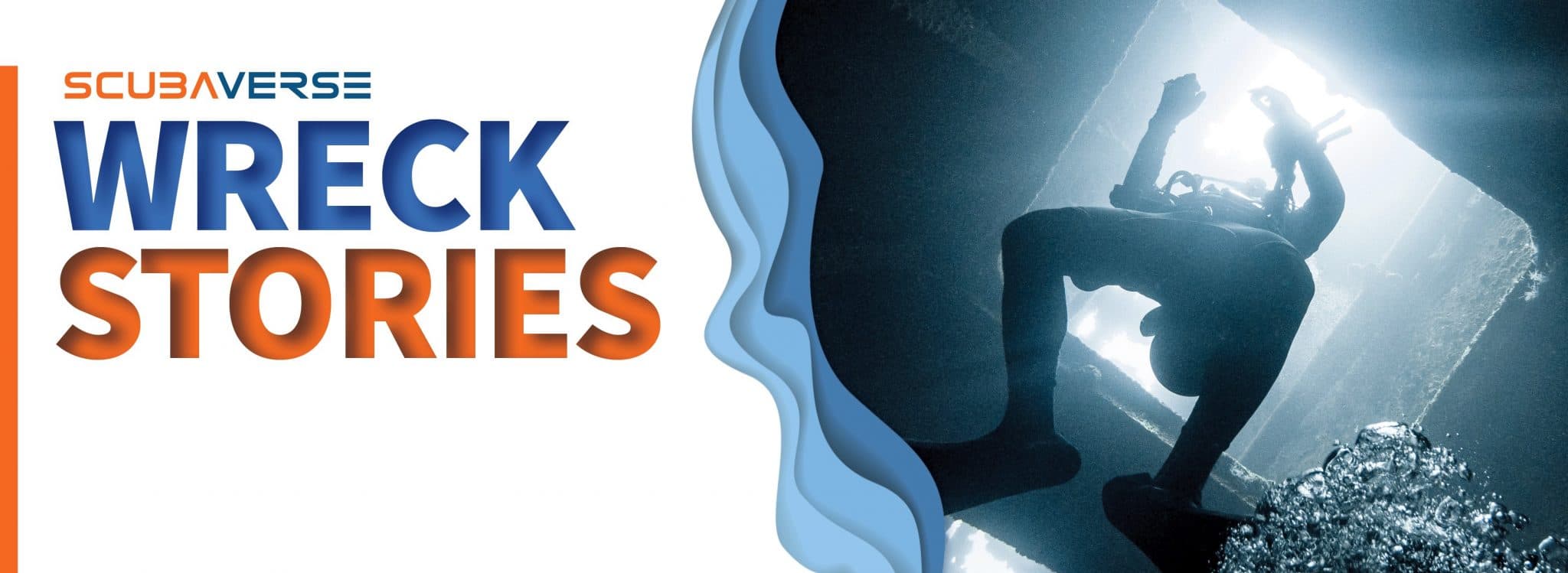
Reprising our popular series of Cornish Wreck Ramblings by Mark Milburn…
Part 13: Dollar Cove, just what is the ‘truth’?
For many years treasure hunters have been searching for the fabled “Dollar Cove” wreck. Dollar Cove’s actual name is Jangye Ryn; it got the name “Dollar Cove” from the silver pillar dollars, pieces of eight, that used to regularly wash ashore. Most stories online state that coins washed up from the 17thC wreck are dated up to around 1775, so late 18thC. The San Salvador is quite often listed as being the dollar wreck, it was a hundred years too early. Although it was reportedly wrecked near Gunwalloe Church Cove, the wrong side of St Winwalloe Church to be the Dollar wreck.
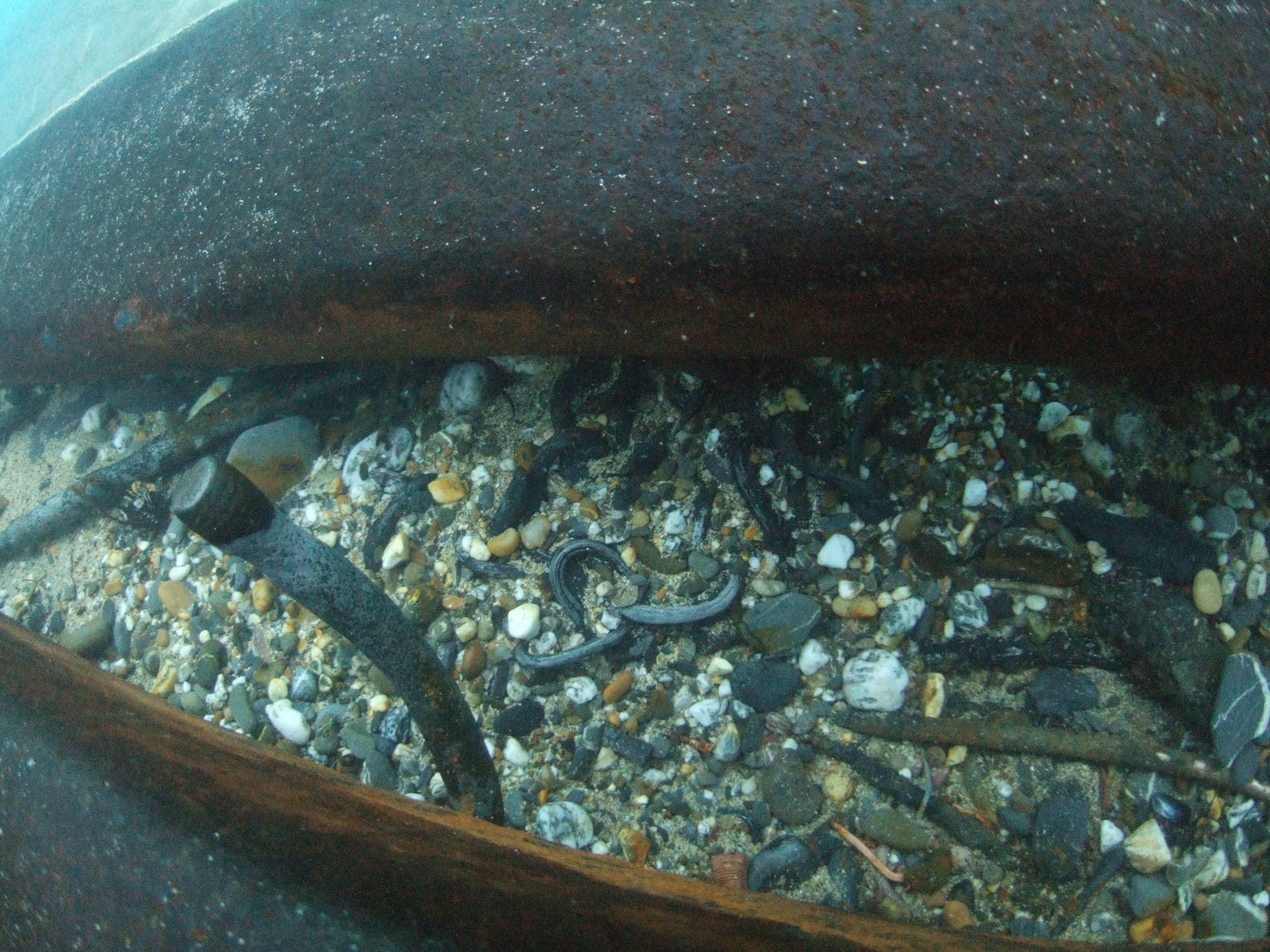
Underwater artefacts
Within the church records of St Winwalloe, there is an entry from 1787, it states that a Portuguese wreck occurred with several bodies washed ashore. There are no records of this wreck anywhere, which is no surprise. There are many wrecks along that piece of coast without any records.
The current suspect, is the Rio Nova, it sank in 1802, near Penzance. The whole of Mounts Bay was classed as close to Penzance, back in those days. The Rio Nova was carrying 19,000 silver coins, 12,500 of which were recovered at the time. Many coins have washed up over the years, on one day in the late 19th century, 484 coins were said to have washed up one night. The main problem with the Rio Nova being the dollar wreck, is that divers said they found the Rio Nova near Penzance many years ago.
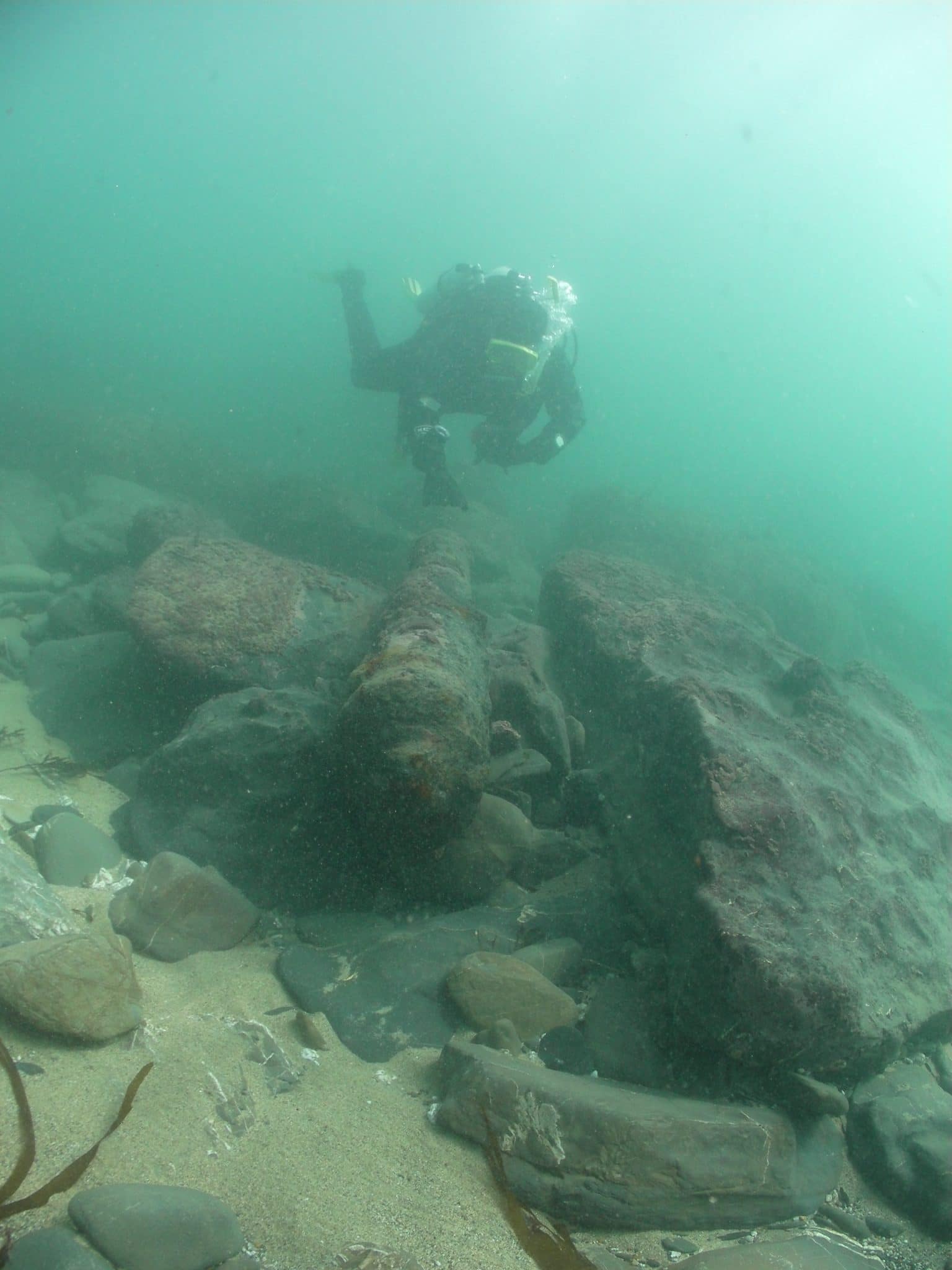
A lone 18th Century Cannon, possibly from the Dollar Cove Wreck
Some other sources of information state:
A Spanish ship struck the cliffs midway between Gunwalloe Church Cove and the fishing cove, half a mile westward. She broached, end to end, and spilled her cargo of pieces of silver. In 1845 a limited company tried to recover the cargo by damming the mouth of the gully with the intention of pumping it dry at low water. However, their attempts were thwarted by a southwest gale which swept the dam away. (2)(3)(4)
The distance between Church Cove and Fishing Cove is a couple of miles, the gully they dammed was believed to be the one on the headland, between Church Cove and Dollar Cove.
Another attempt was made in 1847 when a gang of miners were hired to cut a passage down and steps down the cliff and sink a shaft 3 metres in diameter and 25 feet deep in the rocks. The miners then drove 40 feet under the gully, but no coins appeared; but the sea did and they just escaped with their lives. (2)(3)(4)
Some of their efforts are still visible around the headland, the main one being a cutting on the far most northern corner.
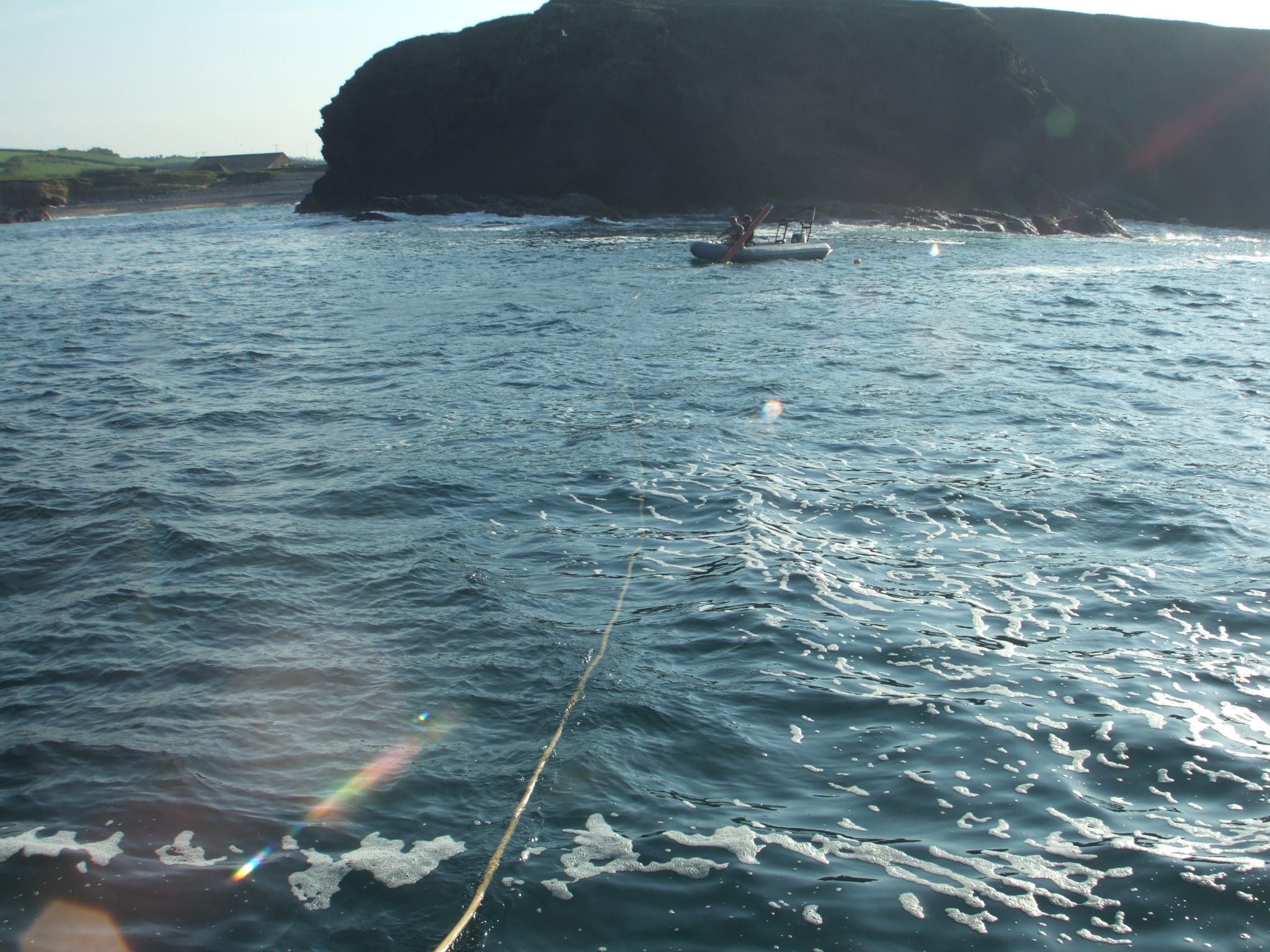
A 2006 attempt to locate the treasure
Thirty years later, a Mr Boyd, with engineers and divers, attempted to pump out and sieve the contents of the 1847 shaft. No dollars were found so they decided to blow up the shaft and sieve it but to no avail. (3)(4)
In 1877 two bankers from Helston sold 200 shares at £3 each to finance another attempt. The circular mentioned several ships rather than one and the promoter John Toy had occasionally picked up dollars around the cove. He had divers working within a caisson, but nothing was found during the first season. However, the following year an unspecified quantity of coin was recovered, but it was insufficient to repay the shareholders and the company went into liquidation. (3)(4)
There are several ships in the area, this story seems to have been echoed many years later, on another wreck in Cornwall.
In June 1890 another attempt was made by the Liverpool salvage steamer ZEPHYR, but it came to nothing. The last attempt was made by a London businessman, who hired a suction dredger and shifted thousands of tons of sand, but no coins were found.
Since the 1890 attempt, many people have looked, including the legendary Roland Morris. He implied that he may have known where it was, after an argument with the National Trust about ‘rights to wreck’, he left. The NT told Roland to tell them where it was, he just laughed and told them he never would,
The last I can remember was in 2007, when a business man from Chippenham, hired a boat with some local divers including myself, to try and excavate the site. We visited twice in 2007 and recovered hundreds of artefacts but no coins. The first visit found the inlet, which was dammed in 1845, to be completely void of sand, nothing was found apart from some steel beams and a sounding lead. So either all the coins had all been removed, or they were never there in the first place. He is still looking.
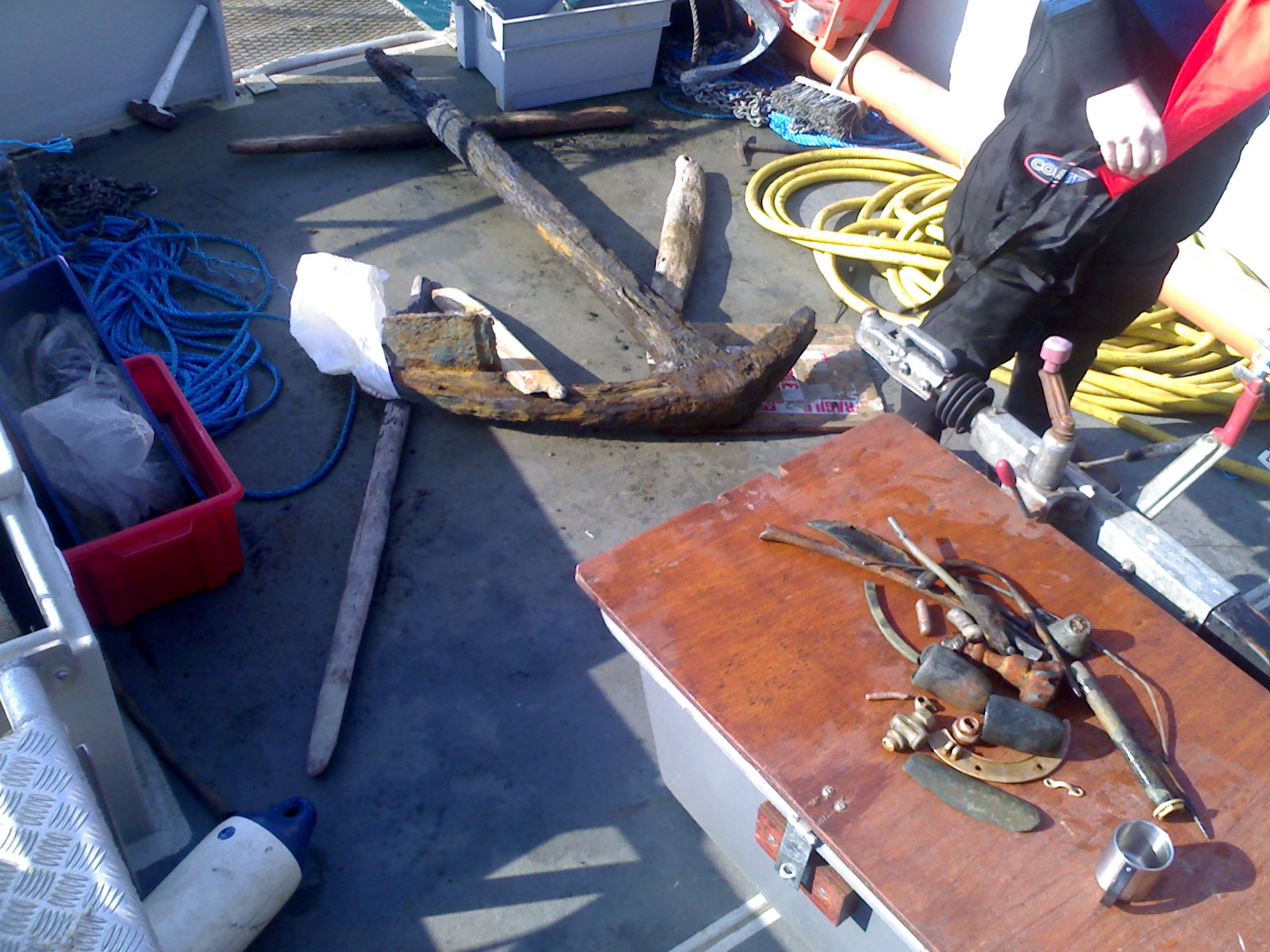
Artefacts recovered during a 2006 attempt
Notes:
(2) Richard Larn 1987 A Diver Guide, Dive South Cornwall – 2nd Edition Page(s)116-17
(3) by Richard Larn 1996 A Diver Guide, Dive South Cornwall – 3rd Edition Page(s)166-69
(4) R. Larn 1983 The Diver Guide to South Cornwall – 1st Edition Page(s)134-35
Find out more about Mark and Atlantic Scuba at www.atlanticscuba.co.uk
Blogs
Alonissos: The complete diving destination (Part 1)

In June we were incredibly fortunate to be invited to dive in Alonissos, a small Greek Island in the Sporades island chain located in the North Aegean Sea. While I have long been a big fan of the Greek Islands as a great holiday destination, I had not had the opportunity to do any diving on previous visits and Mike and I were extremely excited to see what Alonissos had to offer both above and below the surface!

The Sporades are easily accessible via the airport in Skiathos (the first island in the chain), which is served by Jet2 flights from all major UK airports from May through October. Numerous ferries and charter boats make island hopping from Skiathos Town a breeze. After an hour boat ride, the picturesque port of Patitiri was a wonderful introduction to Alonissos, where we were met by our gracious hosts Kostas of Albedo Travel and Dias of Alonissos Triton Dive Center. Mike and I were delighted to be staying at the Paradise Hotel, aptly named for its stunning views over the sea and great location for walking to the waterfront.

Alonissos is beautifully situated in the National Marine Park of Alonissos and the Northern Sporades, the largest marine protected area in Europe. The surrounding seas offer fabulous marine life, including incredibly rare species such as the Mediterranean monk seal. They boast deep walls covered in gorgonians and sponges, stunning topography with caverns, swimthroughs and pinnacles, and the first accessible ancient shipwreck from 500BC!

In locations where historical sites have been reported, the waters are largely restricted, but with collaboration between government, underwater archeologists and dive centres, incredible underwater museums are being created for a truly unique diving experience. Alonissos is home to the first of these, the Ancient Shipwreck of Peristera Accessible Underwater Archeological Site. The chance to dive into history (along with reports of healthy reef life and amazing underwater topography) meant Mike and I were keen to get in the water.

Our introduction to the diving around Alonissos was at the Agios Georgios Pinnacles, in the channel between Alonissos and Skopelos. This fantastic site was named “The Chimney,’ and proved to have a huge amount to see. We got to a decent depth here (over 25m), and marvelled at a colourful reef wall with a wonderful swim through whose rocky walls were absolutely covered with life. As well as brilliant topography there was no shortage of macro life here. We saw numerous nudibranchs, five different species in total. The second dive at Mourtias reef nearby was a shallower dive along a nice wall with lots of crevices. Several moray eels and grouper called this site home. We enjoyed looking in the crevices for lobster and smaller benthic life, such as cup corals and tunicates.

Our itinerary allowed us two dives a day with afternoons left to explore the island with our hire car and evenings to enjoy the famous Greek hospitality. This proved to be a lovely mix of in-water and land based diversions.

The next days diving to the Gorgonian Gardens and Triton’s Cave was to be even better! These two stunning sites are nothing short of fabulous. The Gorgonian Gardens was a deep wall near to the Agios Georgios islands. The ever-present currents in this deep channel meant that the sea life was amazing … the namesake Gorgonian sea fans dotted the wall at a depth of 30 to 50 meters, getting ever larger the deeper we went. Above 30m was by no means less beautiful, with sponges, corals, scorpionfish, moray eels and some rare and colourful nudibranchs.

The second shallower dive of the day was to Triton’s Cave or the Cavern of Skopelos, on the east side of that island. The spectacular rock formations had wild striations both above and below the water making a truly epic topography. The cavern entrance was at 14m, and big enough for a buddy pair, winding up to 6m and passing two beautiful windows out into the blue. Emerging from the cavern, the light at the shallower depths and the incredible rock formations made for a fantastic gentle swimming safety stop and we all surfaced by the boat with massive grins.

Check out our next blog :Alonissos: The complete diving destination (Part 2)” to hear about our amazing dive on the 2500 year old Peristera Wreck!
Thanks to:
Alonissos Triton Dive Center https://bestdivingingreece.com/
Albedo Travel https://alonissosholidays.com/activities/
Paradise Hotel https://paradise-hotel.gr/
Alonissos Municipality https://alonissos.gr/en/
Blogs
Mamma Mia! Diving Skopelos (Part 2)

Our second days dive itinerary was to the famous Christoforos wreck! This is arguably the best dive in Skopelos and though only open to divers with deep diving experience, this 83m long wreck is well worth the visit.
The Christoforos sits in 43 meters of water with the deck at 32 to 35 meters. A 30m dive can give an impressive view of the wreck, though such a large wreck needs a few dives to truly do it justice. Given its ideal location just a 2 minute boat ride from the dive centre dock it is an excellent first dive of the day. The sheltered site is also diveable in all but the absolute worst weather so although deep, the water is usually clear with little to no current making it a very pleasant dive. The site is superb for technical diving and a great training site for the Tec 40 and 45 programs, offered by Skopelos Dive Center.

The Christoforos wreck was originally a collier ship built in 1950 at Grangemouth shipyard under the name “Thomas Hardie”. In 1976 she joined the Greek merchant fleet as “Christoforos”. On the 2nd of October 1983 the Christoforos was carrying 2600 tonnes of cement from Volos to Piraeus Port. During the voyage the weather turned, resulting in the ship developing a 7 degree list, whereby she changed course for safe anchorage at Panormos, Skopelos. The ship reached Panormos at 16:00 with a list of 17 degrees and water ingress to No. 1 hull. Though attempts were made to right the vessel, the crew were ordered to abandon ship at 22:00. The captain, lieutenant and the quartermaster remained to try and save the ship, but had to abandon the attempt themselves and the Christoforos finally sank at 05:30 on 3rd October 1983. She now sits upright in 43 meters of water less than 200m from shore in Panormos.

Diving has only been allowed here since 2018, so the wreck is very well preserved and a real treat to dive. Permission to dive here was granted by the authorities after lots of incredibly hard work by the Skopelos Dive Center staff. Having a fantastic wreck in such an amazing location and in excellent condition is a real privilege.

Of all the sites in Skopelos this was the site Mike and I were most keen to experience. Having kitted up and zipped across the bay to the mooring, we left the surface and followed the descent line until the wreck emerged spectacularly from the blue at 15m. She is a big and beautiful wreck, sitting as though calmly continuing her journey along the seabed. With most of her original features still intact there were points of interest everywhere, including the anchors, winches, ships telegraphs, the wheel and RDF antenna.

We found that aquatic life had colonised the ship, with schools of fish, electric blue nudibranchs, a large moray eel and the resident scorpionfish lurking inside the bridge. The Christoforos was truly a stunning wreck and despite maximising our time at depth we eventually had to say our goodbyes and begin the slow and steady return to the surface.

After a superb morning dive we had the afternoon to do a little sightseeing of the island, with a trip to the church of Agios Ioannis Kastri made famous by the blockbuster movie “Mamma Mia!”. Mike and I spent a happy afternoon pootling around in our little hire car before meeting up with Lina from Skopelos Dive Center. An underwater archeologist as well as a dive professional, Lina had offered to show us a rather special attraction, the Christoforos shipwreck Digital Spot public information and awareness centre.

A fantastic initiative made possible from the collaboration of the government and hard work of the staff at Skopelos Dive Center is the “Digital Spot” in Agnontas port. This information center has a number of displays on the history of the Christoforos wreck, the process by which the wreck was allowed to be opened to the public for diving tourism, other sites of historical interest in the area, a video of the wreck and the best bit, a virtual reality dry dive experience! The beauty of the VR system is that non diving members of the family can see what you have seen on the wreck, or you can see areas that you may not have explored during the dive due to time or depth limitations. It was a truly immersive experience and a great addition to the dive itself.

After a wonderful day we celebrated our last evening on the island with an exquisite meal in Skopelos Town with fabulous views over the town and bay, washed down with the excellent local wine. The lamb with lemon and potatoes was a meal which I could happily eat every day for the rest of my life!

Skopelos is an island that truly has it all. The diving is excellent, the landscape is beautiful with plenty of non diving activities, the locals friendly and the food and drink superb. Given how accessible it is as a holiday destination it has avoided becoming overcrowded and even in peak season offers a fun yet relaxing atmosphere. We highly recommend giving Skopelos a visit. We will certainly be back again!
Thanks to:
Municipality of Skopelos (https://skopelos.com/)
Skopelos Dive Center (https://sporadesdiving.gr/)
Ionia Hotel (https://www.ioniahotel.gr/en)
Dolphin of Skopelos (https://dolphinofskopelos.com/)
Ta Kymata restaurant (@takymata)
The Muses restaurant (https://www.facebook.com/TheMussesMousses/)
Aktaiov resturant (https://skopelos.com/listings/aktaion-taverna/)
-

 Blogs2 months ago
Blogs2 months agoDiving With… Nico, Ocean Earth Travels, Indonesia
-

 News1 month ago
News1 month agoMurex Bangka Announce New Oceanfront Cottages & Beachfront Dining
-

 Blogs2 months ago
Blogs2 months agoA new idea in freediving from RAID
-

 Marine Life & Conservation1 month ago
Marine Life & Conservation1 month agoIceland issue millionaire whale hunter a licence to murder 128 vulnerable fin whales
-

 Marine Life & Conservation2 months ago
Marine Life & Conservation2 months agoThe Shark Trust Great Shark Snapshot is back
-

 News3 months ago
News3 months agoCharting New Waters; NovoScuba Goes Global with the Launch of their Revolutionary Dive Training Agency!
-

 Gear News1 month ago
Gear News1 month agoNew Suunto Ocean – a dive computer and GPS sports watch in one for adventures below and above the surface
-

 Marine Life & Conservation Blogs2 months ago
Marine Life & Conservation Blogs2 months agoBook Review: Plankton















